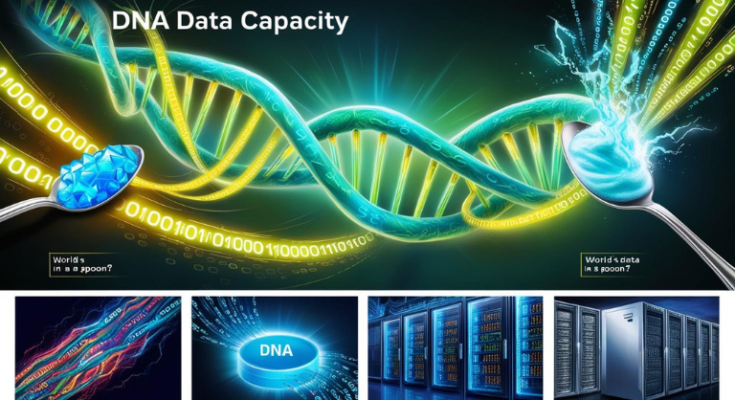DNA Storage: Nature’s Ultimate Data Drive
The human body is a marvel of biological engineering, and at its core lies an extraordinary molecule: DNA (Deoxyribonucleic Acid). This molecule not only carries the genetic instructions for life but also represents one of the most efficient data storage systems known to science. Astonishingly, all the DNA in a single human body could theoretically store around 150 zettabytes of data. To put this into perspective, one zettabyte equals a billion terabytes, far surpassing the storage capacity of all the digital data generated globally.
Understanding DNA as a Storage Medium
DNA consists of a sequence of four chemical bases: Adenine (A), Thymine (T), Cytosine (C), and Guanine (G). These bases pair up (A with T, C with G) to form the iconic double-helix structure. The order of these bases encodes information, much like binary code in computers, where sequences of 0s and 1s represent data.
Each human cell contains about 6 billion base pairs of DNA, which is roughly equivalent to 1.5 gigabytes of data. With approximately 37 trillion cells in the human body, this adds up to an enormous potential storage capacity—about 150 zettabytes.
Why DNA is an Efficient Storage System
- Density: DNA is incredibly compact. A teaspoon of dried DNA could theoretically store all the digital information in the world. This density far surpasses that of modern data storage technologies like hard drives or solid-state drives.
- Durability: DNA is remarkably stable and can last thousands of years under the right conditions. Unlike digital storage media, which degrade over time, DNA can preserve information for millennia, as evidenced by the successful sequencing of ancient DNA from fossils.
- Self-Replication: One unique feature of DNA is its ability to replicate itself with high fidelity. This property not only ensures the continuity of life but also offers potential for data redundancy in future storage applications.
Applications of DNA Data Storage
Scientists have been exploring ways to harness DNA’s storage capabilities for digital data. Some of the most exciting applications include:
- Archival Storage: DNA’s long-term stability makes it ideal for preserving critical data, such as historical records, cultural artifacts, and scientific research.
- Data Density Challenges: Companies like Microsoft and IBM are developing DNA-based storage solutions for future data centers. The goal is to store massive amounts of data in a fraction of the space required by current technologies.
- Biological Computing: By encoding complex algorithms into DNA sequences, researchers are exploring new frontiers in computational biology, where DNA acts as both the hardware and the data.
Challenges and Future Prospects
While DNA storage has immense potential, there are hurdles to overcome:
- Cost: Synthesizing and sequencing DNA is still expensive, though prices are dropping rapidly with advancements in biotechnology.
- Speed: Writing and reading data in DNA is currently slower compared to electronic storage systems.
- Error Rates: DNA synthesis and sequencing can introduce errors, though error-correction algorithms are improving.
Despite these challenges, the future of DNA storage looks promising. As technology advances, we may one day see DNA replacing conventional hard drives, offering unparalleled storage density and longevity. This biological marvel, which has been storing life’s blueprint for billions of years, could soon revolutionize how we manage digital information, bridging the gap between biology and technology.



